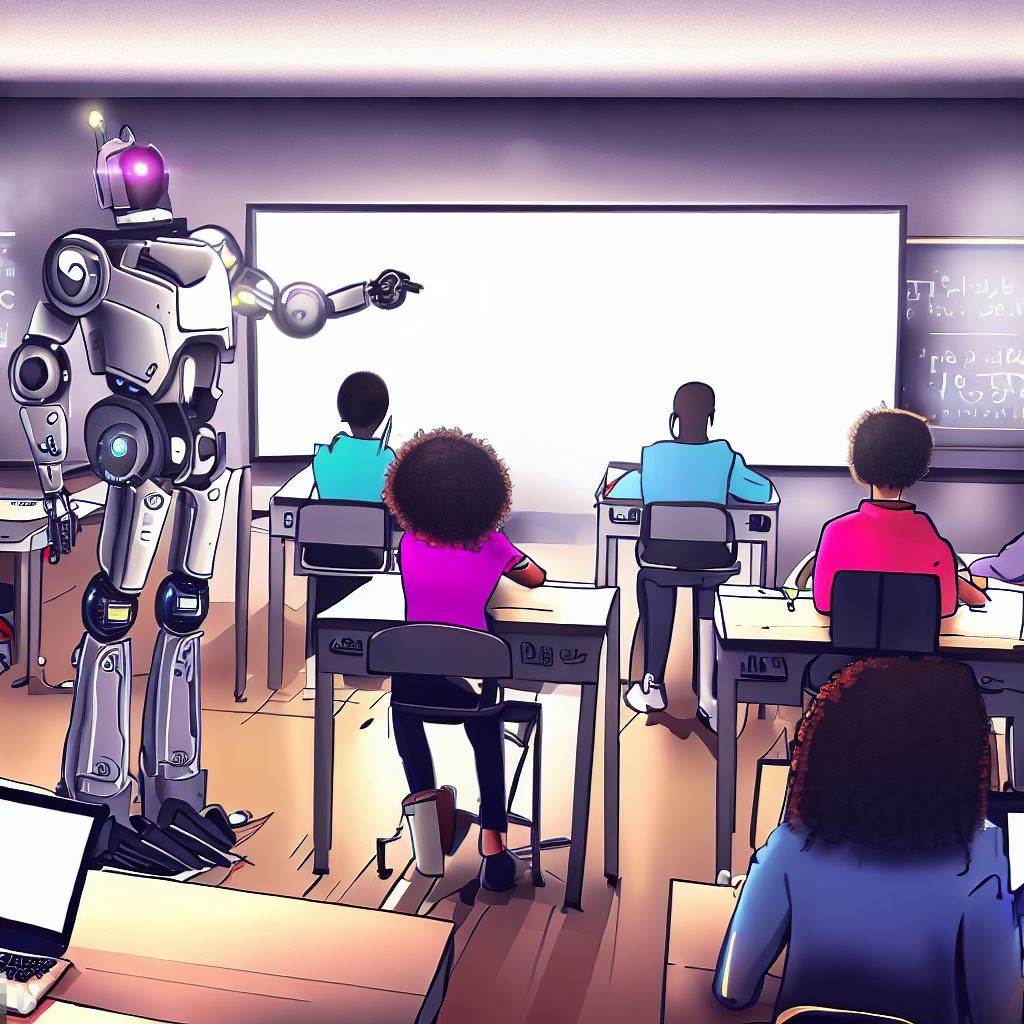What is GenAI?
What is Artificial Intelligence (AI)?
Before we introduce Generative AI (GenAI), let’s pause for a moment to consider traditional AI. AI has a long history. Scroll through the timeline below to explore a selection of the key advances in AI. Click on the image in the top right hand corner to view fullscreen.
Artificial intelligence (AI) is the theory and development of computer systems capable of performing tasks that normally required human intelligence, such as interpreting language, recognizing patterns from large amounts of data, and making decisions. Some of the names given to AI, based on the way in which it is designed and what it can do, include neural networks, natural language processing, computer vision, speech recognition, machine learning, and deep learning.
While we tend to think of it as a product of the 21st century, it has been around since the middle of the 20th century. Chances are good that you interact with AI every day. Examples of AI include:
- Asking your Smartphone to unlock your phone by recognizing your face;
- Navigating to your destination using apps like Google Map or Waze to find the quickest route;
- Getting more posts in your social media feeds that match those with which you previously interacted (that you liked or commented on);
- Getting a notification from your bank that there has been unusual activity in your account;
- Obtaining a recommendation from an online store (or music or video streaming platform) based on your previous purchases;
- Interacting with a customer service chatbot;
- Feeding your text through a grammar software that suggests better ways to write your text;
- Using Google Translate to translate text from one language into another;
- Using a voice-to-text app on a smartphone;
- Using a personal assistant like Siri, Alex, or Cortana.
AI has been around in education for decades, usually embedded as part of the student management system or the learning management system. These sorts of AI monitored student engagements with their platforms and analyzed large amounts of data to predict which student was likely to succeed or withdraw from a course (and therefore which ones might benefit from additional support), and how to optimize and personalize learning.
What is Generative AI (GenAI)?

Generative AI (GenAI) is an Artificial Intelligence (AI) technology that automatically generates content in response to prompts written in natural language conversational interfaces. Rather than simply curating existing webpages, by drawing on existing content, GenAI actually produces new content. The content can appear in formats that comprise all symbolic representations of human thinking: texts written in natural language, images (including photographs to digital paintings and cartoons), videos, music and software code. GenAI is trained using data collected from webpages, social media conversations and other online media. It generates its content by statistically analysing the distributions of words, pixels or other elements in the data that it has ingested and identifying and repeating common patterns (for example, which words typically follow which other words).
At this point in time, the tool that has gained the most attention in education is ChatGPT. ChatGPT was launched to the public in November 2022. ChatGPT draws from a GenAI model that was trained on a huge number of documents from the internet to identify how language works (how to create sentences). Based on this, the GPT model learned the probability that one word should follow another, keeping in mind the topic of the conversation. From this, it is able to generate outputs that seem surprisingly “human” – conversational and coherent. Even though ChatGPT “sounds” human, it is not. It is not sentient, it does not have consciousness. All it does is look at its model and predict the likelihood that the next word in a sentence should follow the last word it picked.
 It is a fancy chatbot – a conversational tool that allows users to search the internet in an interactive manner. Users engage with the GenAI in the form of a written conversation. A user asks questions and can ask follow up questions and fine-tune the GenAI’s responses until they obtain something that meets their needs.. The GPT in ChatGPT stands for “Generative Pre-trained Transformer”, referring to a type of machine learning called a neural network in which a computer learns to perform some task by analyzing training examples. In this case, the training data used by ChatGPT 3.5 is a dataset that includes 570GB of data from sources like books, Wikipedia, articles, and other pieces of writing on the internet up to 2021. ChatGPT is now a famous name because it is a public-facing tool that allows anyone to generate text based on prompts for free (although a paid version is also available). Fundamentally, tools like ChatGPT are designed to take user prompts and use them to generate a response it believes the user would like to see. The AI tool(s) have no concept of fact or accuracy. They simply look for patterns in their training data, then produce what they think is the next most likely word or phrase. It’s also important to keep in mind, that giving the same prompt to the same generative AI tool does not always produce the same result. Each time a tool like ChatGPT is prompted, it creates a new output. While there will probably be similarities between outputs from the same prompt, they will not be the same every time. This is even more apparent when you use the same prompt across multiple AI products.
It is a fancy chatbot – a conversational tool that allows users to search the internet in an interactive manner. Users engage with the GenAI in the form of a written conversation. A user asks questions and can ask follow up questions and fine-tune the GenAI’s responses until they obtain something that meets their needs.. The GPT in ChatGPT stands for “Generative Pre-trained Transformer”, referring to a type of machine learning called a neural network in which a computer learns to perform some task by analyzing training examples. In this case, the training data used by ChatGPT 3.5 is a dataset that includes 570GB of data from sources like books, Wikipedia, articles, and other pieces of writing on the internet up to 2021. ChatGPT is now a famous name because it is a public-facing tool that allows anyone to generate text based on prompts for free (although a paid version is also available). Fundamentally, tools like ChatGPT are designed to take user prompts and use them to generate a response it believes the user would like to see. The AI tool(s) have no concept of fact or accuracy. They simply look for patterns in their training data, then produce what they think is the next most likely word or phrase. It’s also important to keep in mind, that giving the same prompt to the same generative AI tool does not always produce the same result. Each time a tool like ChatGPT is prompted, it creates a new output. While there will probably be similarities between outputs from the same prompt, they will not be the same every time. This is even more apparent when you use the same prompt across multiple AI products.
While each text-based generative AI tool has specific functionalities, some common capabilities include:
- Create informative, well-written text: prose, poetry, dialogue, code
- Provide examples and references *references may be ‘hallucinated’
- Generate outlines, questions, tables, long form text
- Summarize inputted text
- Provide feedback on text – both form and structure
- Explain concepts at different levels of understanding
- Translate between languages
- Remember within a chat thread – follow-up prompts
Here is a great brief introductory video from the Wharton School:
Attributions
This page has been adapted from:
Generative Artificial Intelligence in Teaching and Learning at McMaster University Copyright © 2023 by Paul R MacPherson Institute for Leadership, Innovation and Excellence in Teaching is licensed under a Creative Commons Attribution 4.0 International License

